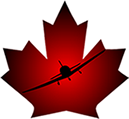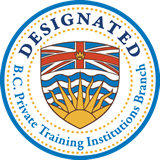 |
|
CROSS WIND HANDLING: LANDING “This
time, let’s talk about one thing that scares more people (in aviation)
The crosswind landing is one of those delights that challenge all pilots to one degree or another and should never be dismissed as routine, particularly when the crosswind is accompanied by gusty conditions, which is not unusual. At a recent DFTE workshop we were shown film footage of a jet airliner attempting a crosswind landing in what looked like close to hurricane force winds. It was heart-stopping footage. We were asked to mark the landing. As you might imagine, scores ranged from 0 to 5 and each marker had a good justification for his or her mark. Justification for the 0 marks centred around the issue of judgement; justifications for the 4’s and 5’s centred around the pilot’s ultimate decision to spool up and abort the landing attempt, thus saving the lives of the crew and passengers. How well I remember my first, clumsy attempts at a controlled crosswind landing. It certainly made me appreciate how well built a C-150 really is. I wish I had film of some of those so I could show them to students who think they are having difficulties mastering the technique. At the very least, it would provide a good chuckle and show that this is a process that must be, and can be, learned. For a “so-called” normal landing, as we turn from base leg to final, we orient ourselves visually to the runway on which we will be landing. We use aileron and rudder to align our aircraft’s longitudinal axis with the runway centre line, elevator and trim to control our approach speed, and power to control our rate of descent. Throughout the approach, we continue to make small adjustments to each control input to stabilise our approach and maintain alignment, rate of descent, and appropriate airspeed. As we reach our round-out point over the runway, we reduce power and flare the aircraft into a level attitude. As speed bleeds off, we increase our angle of attack gently to maintain flight eventually touching down on the main landing gear—in a tricycle gear aircraft—at as slow an airspeed as is consistent with safety under the current conditions. Many conventional gear aeroplane pilots will choose to execute a three-point, full stall landing under “normal” conditions. Simple enough, you say, but probably the single most difficult manoeuvre each student pilot must master. As the sign over my desk says, “There are only three simple rules to a perfect landing. Unfortunately, no one knows what they are.” Enter the crosswind landing. While it is often treated as if it were a new technique during training—“Today, we are going to learn crosswind landings”—the reality is that crosswind landings are simply normal landings that must be performed in somewhat more adverse conditions. Most conventional gear aeroplane pilots will tell you that every landing is a crosswind landing. All the factors that combine to make crosswind landing a challenge are present in virtually each and every landing. In crosswinds, they are simply at bit more obvious. When executing a crosswind landing, visual references must be identified. The aircraft must be appropriately aligned with the runway on approach. Rate of descent, airspeed and alignment must be maintained, and the aircraft must be landed in a safe and stable manner at an appropriate speed. Instructor candidates note: the learning factor of Relationship is our key ally here. This is not really something totally new; it is simply an extension of known skills, knowledge, and judgement. The two key factors we are dealing with, during a crosswind approach and landing, aside from any gust factors that may be present, are drift and weathercocking. That pesky crosswind would like to slide us off into the rhubarb if it were allowed to have its way. Our aircraft is designed to weathercock into the relative wind and will do so very efficiently if given the opportunity. Unfortunately, neither of these tendencies assists us in executing a safe landing. If we land off the runway, at the very least we will have some explaining to do. If we touch down on the runway sideways, we will have some serious excitement in a big hurry followed by a lot of explaining. If we are flying a conventional gear aircraft and land on the runway sideways, it may take us a while to untwist the kinks in our neck before we begin to pick up the pieces and get started on all the explaining. Somehow, we need to solve both our drift problem, caused by the body of air in which we are flying moving the aircraft sideways over the ground, and our weathercocking tendency, caused by the design of the aircraft itself. Two techniques are recommended for approach and landing in crosswind conditions: the crab method and the side-slip method. The crab method requires, in the words of the Flight Training Manual, “…considerable skill, excellent timing and a great deal of practice.” I will add that it also requires a fair pinch of luck at just the right moment. It is not a method recommended for inexperienced pilots and is not normally taught as part of elementary training in Canada. When employing the crab method a pilot will set up his or her approach so that the aircraft is allowed to weathercock into the relative wind but the ground track of the approach is aligned with the runway centre line. Immediately before touch down, the aircraft’s longitudinal axis is aligned with the runway by use of rudder. The advantage of the crab method is that airspeed, power settings, and rate of decent on approach will be close to normal. The disadvantage is that the “straighten-it-out” procedure must be timed perfectly and no unexpected gusts of wind must occur at this vulnerable moment. It can be quite an elegant manoeuvre if performed correctly. It can also result in quite a shambles if it isn’t timed exactly. You only get one shot. If the precise inputs are not applied at exactly the correct moment, you will find yourself landing either sideways to the runway axis or drifting off the runway toward the rhubarb with all the resultant issues involved. My personal bias is to put this landing in the same bag as the three-point, stall landing in crosswind conditions. It has theoretical merit, but the risks are out of proportion to the potential gains. But, that’s just me. The more favoured crosswind approach and landing is the side-slip or wing-down method. Using this technique we align the aircraft’s longitudinal axis along the centreline of the runway once we are established on final approach. In order to maintain this alignment, we use aileron to control drift and rudder to control weathercocking. We will be approaching the field in a side-slip, flying sideways through the air, although our longitudinal axis is aligned with the runway axis. Since we are in a slip, our parasite drag will be considerably increased so we may require additional power to maintain an appropriate rate of descent. Depending on whether we are slipping to the right or left, and depending on the aircraft we are flying, our static port may be exposed to ram air pressure, either positive or negative, and our airspeed readings may be inaccurate as a result. This is not a significant problem; we simply maintain appropriate attitude as we would in any other slipping situation. It may be an excellent plan to increase our approach speed somewhat above normal. This gives us some reasonable protection in gusty conditions and the extra speed will give us increased positive control of the aircraft. Minimal flap required by the runway length and surface is recommended. More flap than necessary increases our vulnerability to the effects of both the crosswind and gusts and can reduce positive control of the aircraft. Establishing the slip while still on final gives us an opportunity to really “get the feel” of what the wind is doing as we execute our approach. We can feel the weight of the wind and the potential drift. We come to know the rhythm of the gusts and the responses of the aircraft. This gives us an excellent chance to practice maintaining alignment for the actual landing. As we continue our approach, we use aileron inputs to maintain our lateral position aligned with the centreline, rudder to maintain our alignment longitudinally, elevator and trim to maintain our attitude, and power to control our rate of descent. We will flare the aircraft over the runway as we would for a normal landing with the exception that we will continue to apply our aileron and rudder control inputs as required. If we attempt to flare and level the aircraft, we will soon find that drift and weathercocking are still present and there we’ll be: off the runway or sideways to the centreline. If it gets a bit uncomfortable here, we can always apply power and go around for another try. No shame in that. As we flare, we can reduce power, but I would suggest, particularly in difficult conditions, to leave some power on. It helps maintain control of the aircraft during our most vulnerable moments. Fly the aircraft on to the ground as gently as possible but with some reserve speed to help maintain control. As a result of our control inputs, the up-wind wheel will touch first. This is normal and correct. As soon as you feel that wheel touch the ground, reduce power to idle. Continue to fly the aircraft; we're not nearly done. As the machine loses speed, the other main wheel will touch. You don’t have to worry about it; just keep flying the plane. With a tricycle gear aircraft, the nose wheel will follow. As the aircraft slows down, we need to gradually but steadily apply full aileron in the direction of the crosswind. If the wind is coming from the left front quarter, as the plane slows down, apply left aileron until full aileron is applied and the aircraft is at slow taxi speed. With a conventional gear aircraft, the debate goes on, but most experienced pilots lean strongly toward the wheel landing in crosswind conditions. It gives us the most positive control of the aircraft when we need it most. The approach is carried out in the same manner as with a tricycle gear aircraft and the aircraft touches down on the up-wind wheel. Once the second wheel is on the ground, we apply forward stick to keep it there firmly. As we slow down, we may want to use brakes to assist in losing speed and to help maintain directional control as needed. We want to get the tail down as soon as possible consistent with maintaining directional control. The most vulnerable moments occur as we slow down and are depending on rudder and brakes for directional control and still have the tail high in the air interacting with that pesky crosswind. Keep the main gear firmly planted, use brakes as necessary to help slow down and get the tail-wheel on the ground as soon as safe to do so. Good job. Don’t forget the breathe. As we would do with a tricycle gear aircraft, apply aileron into the direction of the wind as soon as possible. Once we’re on the ground and have transitioned from landing to taxi, we revert to our crosswind taxi techniques. Learning to deal with crosswinds is a challenge. That’s certain. But it’s one that will expand your proficiency for all landings and will allow you to learn a great deal more about handling your aircraft. Start where you are and build on that. Know your personal limits and the limits of the aircraft you are flying. Get help and guidance when you need it. Enjoy the process. |



